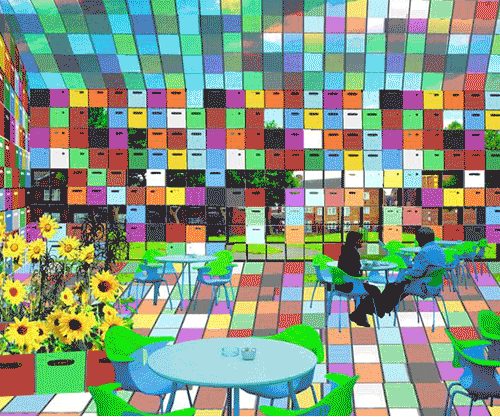
Date
Fall 2004
Place
Liverpool, UK
Medium
Series of events in public space involving 1000 plastic boxes and an installation in the Tate Gallery Liverpool
Design context
Produced for the International Exhibition of the Liverpool Biennial 2004 / Sep.18 - Nov. 28, 2004
Conceptual co-author
Andreas Mayer
Project managing artists in Liverpool
Rebecca Reid, Sue Wrigley
Collaborators
Ibrahim Aksamija, Nadja Aksamija, Marc Daniels, Adrian Devers, Paul Domela, Brian Melcher, Sharon Paulger, Rebecca Reid, David Rhöse, Cath Stevenson, Sue Wrigley
Biennial Volunteers
Anna, Elpiniki, Sam, Melanie, Parabhen, Louise
Sociologist Evaluation
Julie Anderson
Boxes
Plants and Compost
Lady Green Nursery
Bread and Games, Plant and Play
The project Bread and Games, Plant and Play investigates the interaction of the formal and informal systems in the process of urban revitalization. It intended to become a communicator of problems and ideas in the Liverpool L1 area by provoking a set of questions to which the community would find their own answers and solutions. The medium were plastic boxes in Biennial logo colors, which could be used for exchange of goods, ideas, skills or as event infrastructure. Local community groups were invited to develop weekly events during the Biennial, which would display the local informal production. In the initiating event people were invited to take away boxes of soil and seeds and encouraged to return with their “grown up” vegetables to the final cooking event. A weekly supply of boxes was brought to the community park. While the proposed events served as scenarios, the project was open to take any other unexpected direction as well.
The community saw the coming to the event just as an opportunity to collect boxes. The boxes soon became a new kind of currency in the area. Not surprisingly, the project team tried to bring the taking of the boxes under control. This shift from an observer to a controller role culminated in a dangerous power conflict with the local hooligans, forcing the project manager to involve police. More frustratingly all boxes were taken and the question of “where is the sculpture?” remained visibly unanswered. Yet, its real impact did not come from the physical intervention itself, but from how people used and misused it. The empty box was not only a metaphor for the lack of ideas and tools for solving community problems. It became a tracking device for its passiveness and the inability of social institutions to break out their own established methodologies. The uncertainty of the final goal and the lack of the “final sculpture” brought about instability into the established system of relationships between the involved parties. However, the box also indicated a potential for the future solving of community problems. The creative engagement of hooligans as project photographers reversed the previously established hierarchies. This action not only transformed the notion of control into collaboration, but it gained more mutual respect.